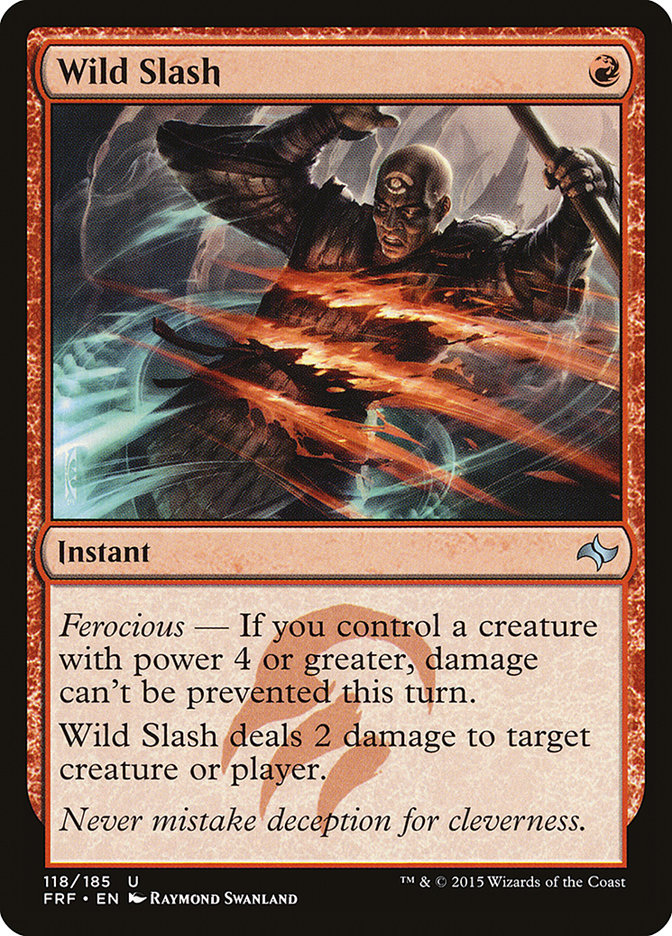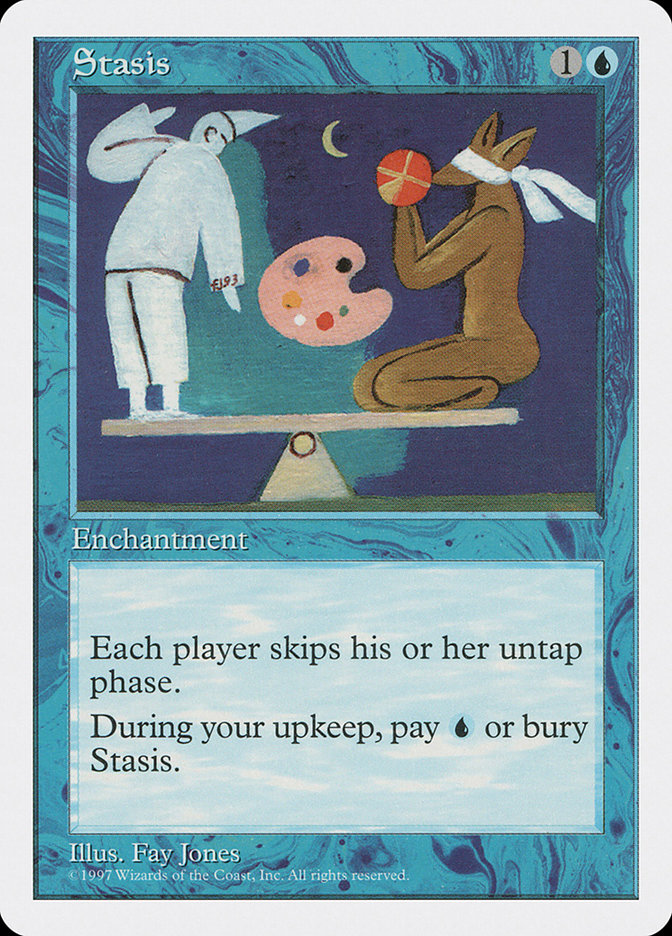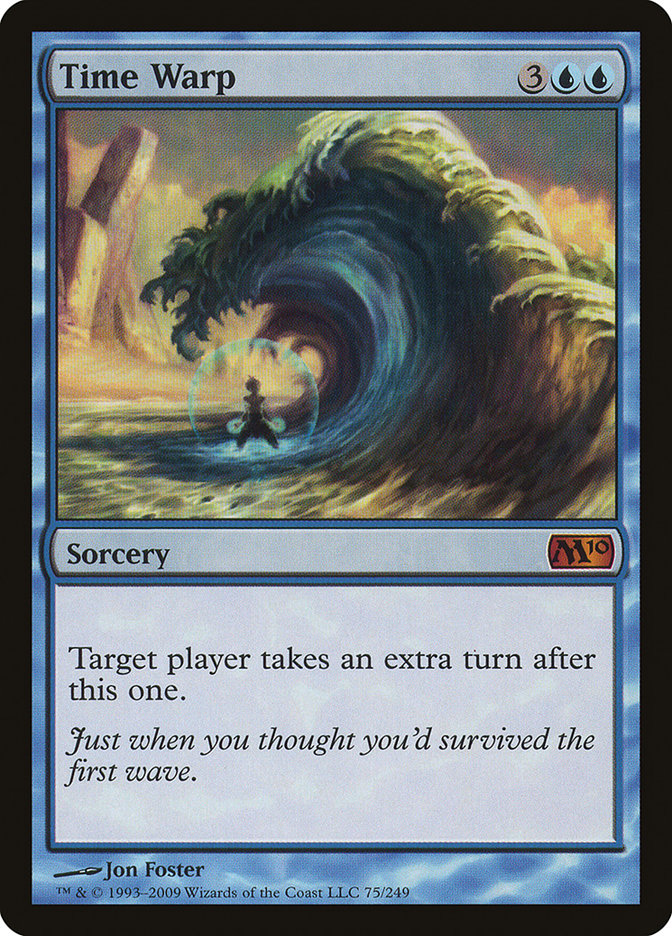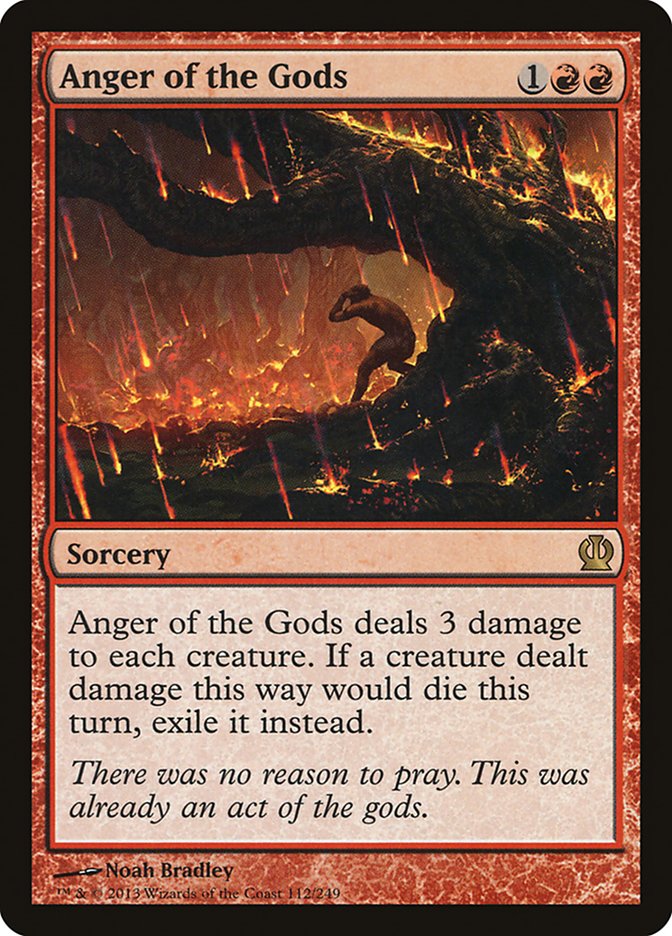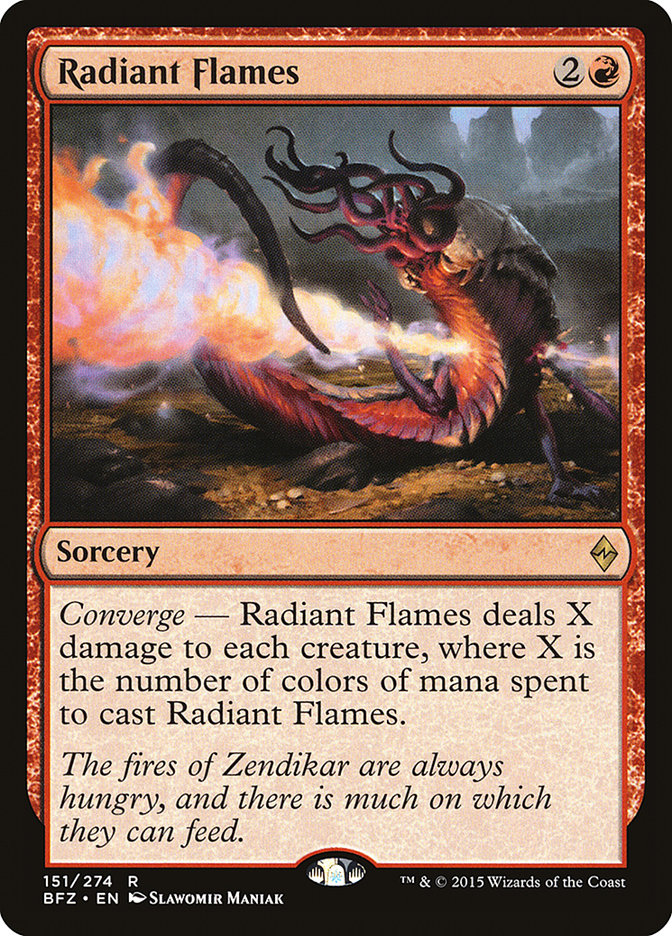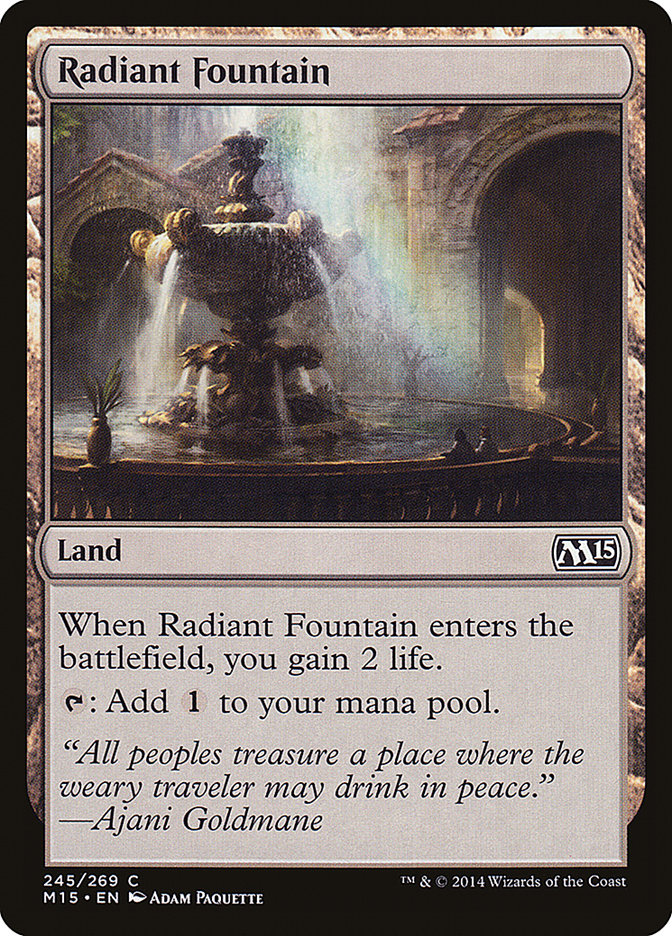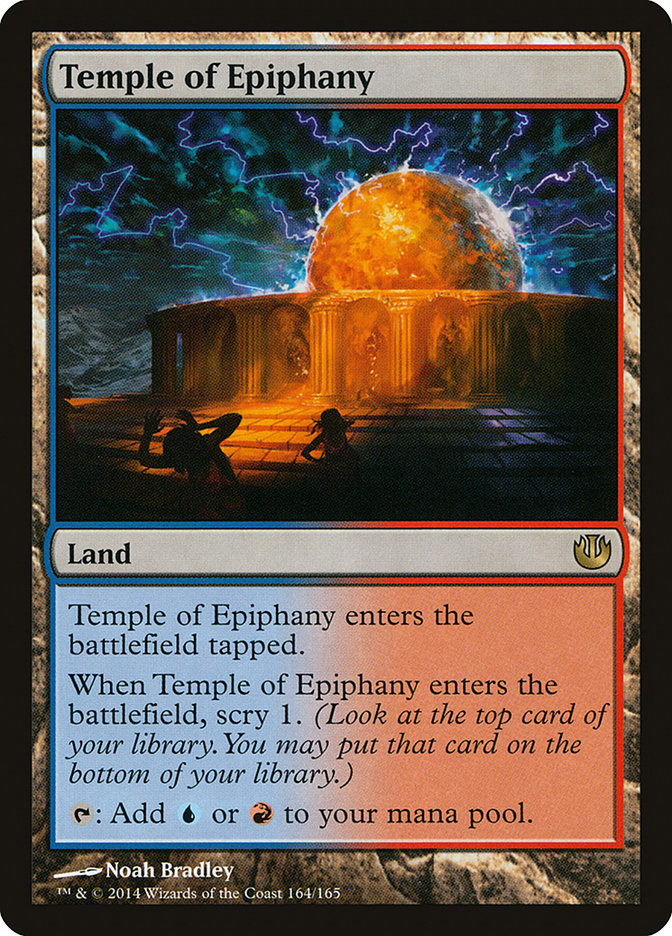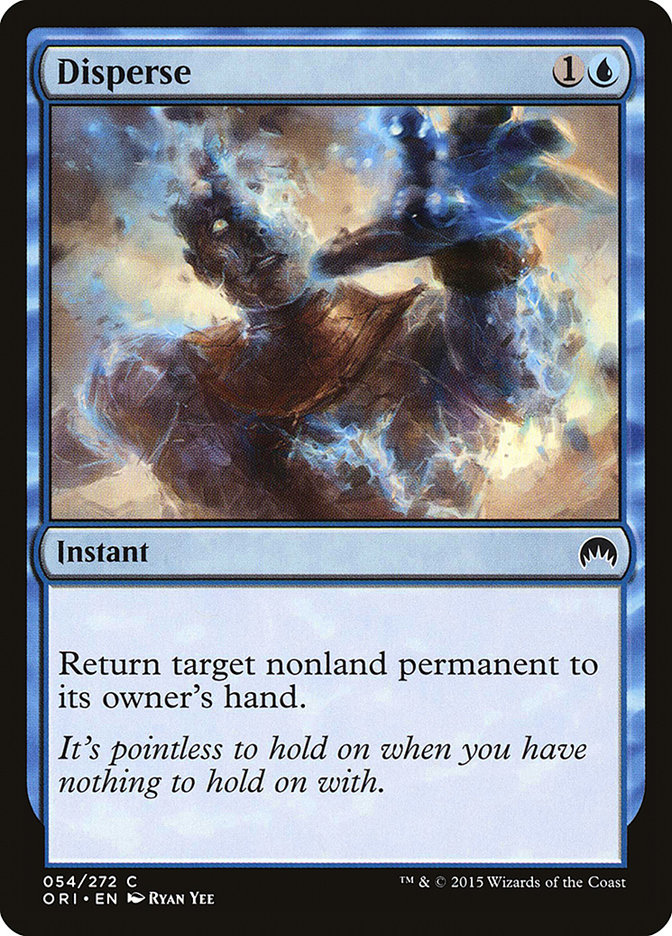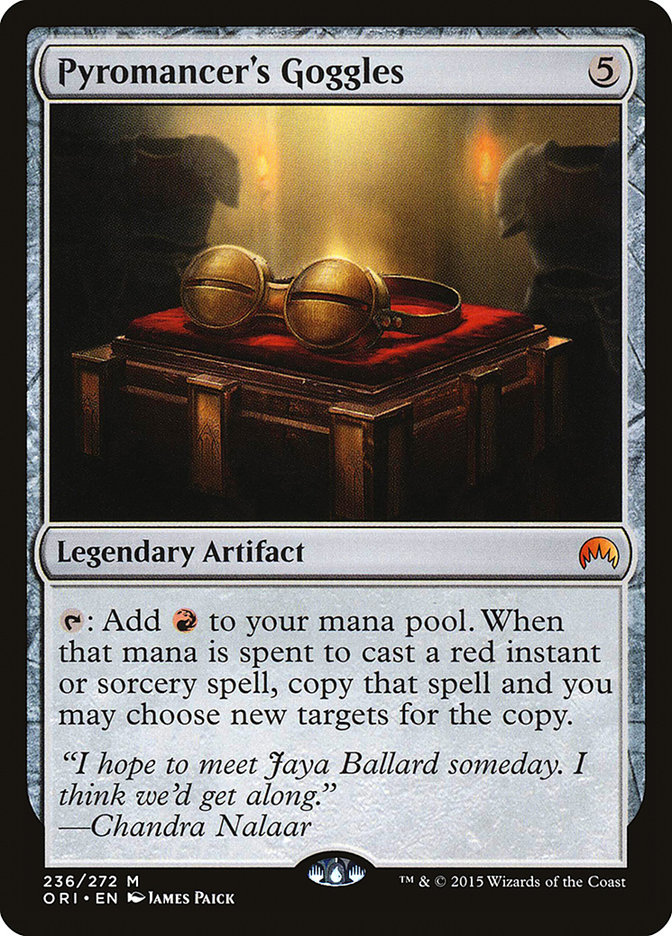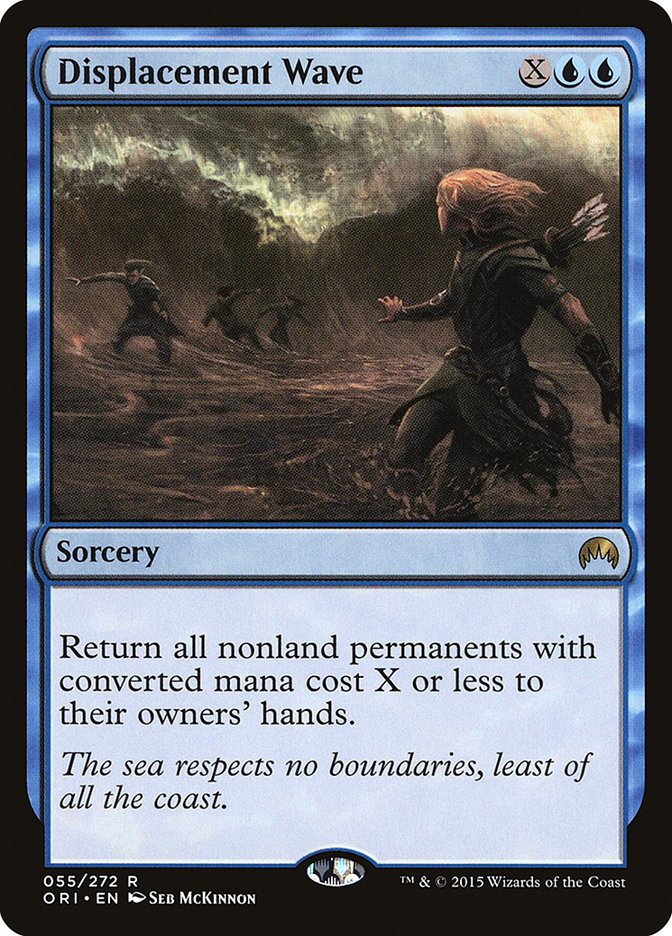One of the decks I tried to put some work into going into Pro Tour Magic Origins was Turbo-Fog. It wasn’t
a huge focus of my prep, but it was something I was very interested in after watching this deck play out:
Lands (24)
Spells (37)

One thing about deeply focused decks like these: If it works, you beat anyone not properly prepared to play against it. James Newman’s deck wasn’t
something I thought was perfect, but it was intriguing, and I hoped to see whether or not I could improve upon it. Ultimately, I think I did, but not
enough for it to be worthy of serious consideration for the Pro Tour, for a wide variety of reasons, not the least of which was the “Wild Slash Problem,”
which tended to knock a Fog of any variety on its behind.
Still, Newman’s deck was intriguing enough that I put in work on the deck. I’ve had a love affair with this style of deck that goes back to
1997, even before Dan Bock (of 60-land fame) made the first Turbo-Fog deck, dubbed “Premature Green” (for more, check out my article
‘The Killing
Fog’). The most successful builds of this deck concept have often entirely eschewed Fog-style effects, though, and have generally locked out the
combat step in more intrinsic ways than simply removing damage.
My last success with the macro-archetype was about five years ago with this deck, originally jokingly dubbed “Unbeatable Turbo Fog” by me and my good
friend Ronny Serio, but eventually scrubbed clean of Fogs in favor of removal and Time Warp.
Creatures (1)
Planeswalkers (3)
Lands (22)
Spells (34)

I lost my win-and-in match to US Nationals in the finals of a Last Chance Qualifier, largely because of my opponent’s own awesome tech, but a part of why I truly loved this
deck was just that most decks weren’t prepared to do anything about the gameplan. Once things started going, their ability to interact was
practically minimal.
I don’t know if Andrew Cuneo was inspired by James Newman as I was, but whatever the case may be, he came to Pro Tour Magic Origins packing Sphinx’s
Tutelage. While he was vocally not particularly excited about his finish, at least one person found something in it worth thinking about.
Michael Majors’ win at Grand Prix San Diego with an updated U/R Sphinx’s Tutelage deck that was a huge bit of validation for the work that Cuneo had put
into the deck. I remember watching Cuneo play the deck and thinking that it looked to me like there was something to it, even if Cuneo himself
wasn’t excited about how the deck performed.
Here is Michael Majors’ build:
Creatures (4)
Lands (27)
Spells (29)
- 4 Anger of the Gods
- 2 Whelming Wave
- 4 Treasure Cruise
- 4 Tormenting Voice
- 1 Dig Through Time
- 1 Monastery Siege
- 2 Roast
- 4 Sphinx's Tutelage
- 2 Send to Sleep
- 1 Alhammarret's Archive
- 4 Magmatic Insight
Sideboard

All of this feels incredibly worth bringing up for several reasons:
A – Some of the best weapons against the deck no longer exist (Thoughtseize, Perilous Vault).
B – It feels like the decks most likely to exist post-rotation are all weaker than the decks pre-rotation.
C – U/R Tutelage has lost nearly nothing.
Let’s focus on that last point: the deck has lost nearly nothing. Here are the spells heading bye-bye:
Some people have called losing Whelming Wave a big deal, but Majors himself has said he thought it was the worst card in the deck. Losing four Anger of the
Gods is a big deal, but fortunately, replacements are available:
Radiant Flames, of course, does require a reworking of the mana. On the negative side, adding a color is always a blow. On the positive side, casting
Radiant Flames for only two damage is actually easier than casting Anger of the Gods, and with the coming of Battle for Zendikar, mana is actually
fundamentally incredible.
This doesn’t mean there aren’t other losses:
It’s almost ironic that the deck is losing one kind of “Radiant” for another, but one thing that it speaks to is a need for extra means of preserving life.
The other loss, Temple of Epiphany, cannot be understated: finding Sphinx’s Tutelage is a very fundamental part of the deck, and solving this problem is
critical for the deck to function.
After playing a number of matches with innumerable Sphinx’s Tutelage builds, talking to people who’d played the U/R version, and looking at what Michael Majors himself had to say about the deck, I put
together this version:
Creatures (4)
Lands (27)
Spells (29)
- 1 Disperse
- 4 Treasure Cruise
- 4 Tormenting Voice
- 2 Dig Through Time
- 2 Roast
- 4 Sphinx's Tutelage
- 2 Send to Sleep
- 1 Alhammarret's Archive
- 1 Pyromancer's Goggles
- 4 Magmatic Insight
- 4 Radiant Flames
Sideboard

There is a hairline dash of black in the deck, all to power out Radiant Flames, made to work by the power of fetchlands. So, what are the differences
between this deck and the version played by Michael Majors, and why?
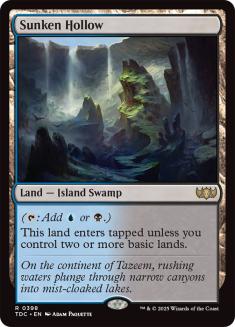

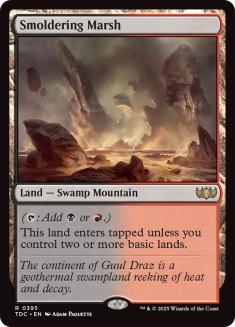


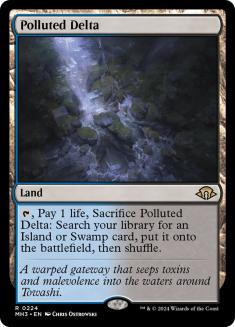




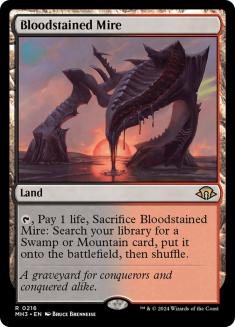





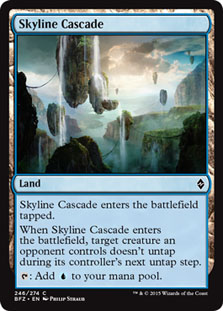



Mana is always an important factor in these decks. First of all, you need to make sure that the mana simply works. Here, eight fetchlands join forces with
the new Battle lands, Sunken Hollow and Smoldering Marsh, giving you not only incredibly consistent mana – including more consistent red and blue than was
enjoyed by Majors – but also two other important elements: first, it creates an abundantly full graveyard to empower delve, and second, access to a third
color helps empower Radiant Flames.
Another payoff is certainly in Skyline Cascade.
This card, in many ways, acts as yet another buffer against beatdown decks. While lands that enter the battlefield tapped are not ideal, we already know
that this deck could support eight such lands previously. At only seven, the deck is even more ready to begin the game running.
One of the things I mentioned about the mana that was valuable was how it feeds delve. Why does delve matter, though? We’ve already packed five delve
spells, so surely we don’t need more?
Well, without Temples, finding that Sphinx’s Tutelage is a critical part of the function of the deck. An extra Dig Through Time can work wonders in finding
that Tutelage, finding answers for the table, or just picking up land to keep building up.
While it lacks the power of Anger of the Gods as a means to deal with Hangarback Walker, it is actually easier to cast effectively most of the time. And
while Hangarback Walker is, of course, an important card to consider, it is important to note that you aren’t without your other solutions. Send to Sleep,
Skyline Cascade, and even Disperse can do some work to help here. In addition, Radiant Flames can always just play cleanup if need be.
Both of these cards are mentioned by Majors as possible cards to consider for the deck over the underwhelming Whelming Wave. I’m certainly sympathetic to
Whelming Wave, but the card I’d consider for its replacement, Aetherspouts, is also rotating out, so that is no help. Each of these cards he offers up as a
potential consideration. I’ve had a great deal of success with Disperse in the past, so I’m sympathetic to his suggestion of the card. Pyromancer’s Goggles
is also a real powerhouse in the deck, lending itself to Magmatic Insight turns that are gross, almost like an Alhammarret’s Archive coming online a turn
sooner. The Goggles are probably the first card to consider cutting if you want to be more conservative, likely to be replaced with another Disperse,
Roast, or Dig Through Time.
The sideboard maintains a lot of the cards that we’d already seen before. However, there are some slight changes. Like Ensoul Artifact, Annul and company
are gone. Besides fundamental shifts like that, we have a few informed by the new card pool.
First is the choice to run three copies of Encase in Ice. Not only is the card a fine card against Siege Rhino and friends, but it also makes an excellent
buffer against Dromoka’s Command, which can otherwise be a real problem for the deck. Especially with cards like Goblin Rabblemaster no longer in the mix,
Encase in Ice is a very reasonable removal spell.
Some copies of Dispel have replaced several copies of Negate (though a pair of Negates remain), making the deck all that much more ready to fight an active
counterspell war. One of the things that this deck wants to do as soon as possible against a controlling deck is to drop Sphinx’s Tutelage; Dispel allows
you to drop Tutelage and fight for it as soon as possible.
Displacement Wave isn’t an incredible spell, but it is halfway decent at cleaning up after tokens. For a very low cost, you can make the world all that
much simpler, and for a little more mana, you can clean it up a little more. This isn’t an incredible card by any means, but as a way to slow down
Hangarback Walker, it is quite effective, and, if nothing else, you can spend extra mana on it if need be for more durable threats.
The single Orbs of Warding is a nightmare for other Sphinx’s Tutelage decks, and also is a great foil to both tokens and burn spells.
This deck was already a Grand Prix championship deck, and it has emerged essentially unscathed from rotation. While it feels likely that this deck will get
overshadowed as it is adapted to and as new decks are discovered, in this opening volley of Standard, I expect U/R Tutelage to be a real player. This
weekend at #SCGIndy will be the first time we’ll have any evidence of whether or not that is the case.
And this time around, the three Eldrazi titans won’t be able to help save you.
Good luck to everyone out there in Indy.

